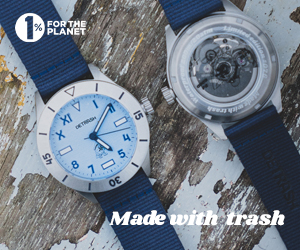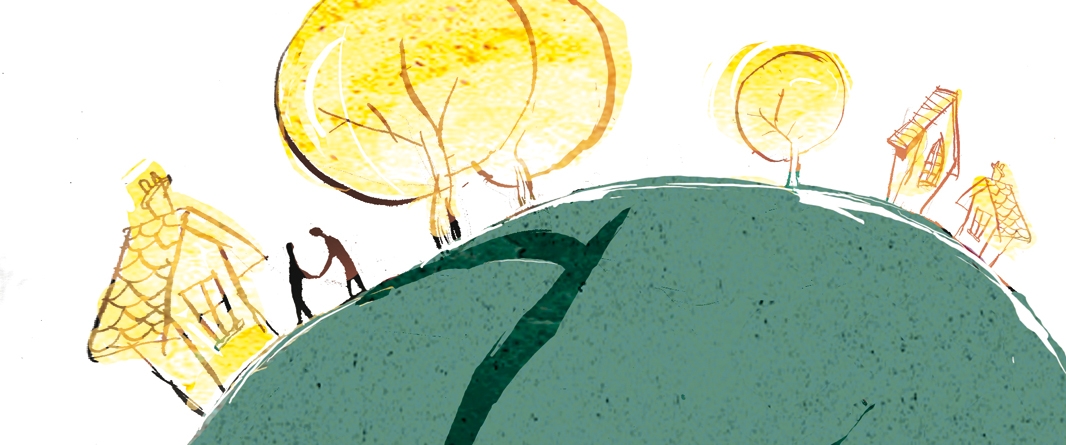At HemingwayDesign, we have just been working on a graphic device for the London Community Recycling Network. It’s a pretty simple concept: drop the ‘f’ from Refuse and what do you get? Reuse.
For us trendy designer types with, as my nan would have said, ‘our fancy London ways’, it’s a clever play on words, and an opportunity to be creative with typeface. But for my nan’s generation, refuse to reuse wasn’t cool or novel, it was just common sense, everyday thrifty behaviour.
I could write this whole column as a list of things that took place in the 60s and 70s Hemingway household that fit under the umbrella of recreating, reinventing, reusing and repairing. Carrier bags became bin liners; the last bits of bars of soap were stored in a jar and then melted down to create new, exotic multicoloured bars; newspaper was ripped up to provide winter protection for strawberry plants. Peelings were composted, most food waste made into delicious ‘roast soup’, socks were darned, jumpers had their elbows patched.
We had great fun turning last year’s Christmas cards into this year’s tree decorations, and watching my mum carefully folding wrapping paper to use the next year is a cherished Christmas memory. My pop’s shed was a shrine to reuse. Cut-off bottles were filled with turpentine to ensure paintbrushes stayed as good as the day they were bought; dozens of jam jars held a dazzling array of screws, nails and bolts; the cardboard inners of loo rolls were seed propagators on the window sill. None of us thought anything of it. We weren’t hippies. That word that has become overused today – ‘sustainability’ – wasn’t in the vocabulary. The concept of ‘protecting the environment’ wasn’t discussed, but it was still at the forefront of our DNA.
The concept of passing down the good things to future generations is embedded in all species. We are survivors, and for a million years or so, in order to survive we have learned how to harness and protect the environment. Yet a significant sector of the population seems to have allowed for overconsumption, to have pushed these instincts into a corner where they can’t find them. Despite the fact that buying heavily marketed labels, slavishly following looks created by magazine stylists who are being paid by the brands that advertise in their magazines, and spending on products that are obscenely overpriced is seen as uncool by the true purveyors of cool. That to the majority of you making your own clothes, adapting items that don’t cut it style-wise any more or buying vintage, this kind of spending just isn’t on the radar. Sewing-machine sales have doubled in the last couple of years, but when you look at the figures, it’s a doubling from a pretty pathetic purchase base.
When I look at my own house, it’s the joy that we get on a daily basis from a pair of sofas fashioned from the wreck of an old wooden fishing boat. Not to mention the regular praise heaped upon it by visitors and the media, ten years after we made it. In the garden it’s the teepee made from old telegraph poles, and the treehouse made from flotsam and jetsam found on the beach that has held the attention of our kids.
All of these examples are a result of imagination, and that inbuilt instinct to recreate, and yet governments and banks are trying every economic stimulus possible to get us back out consuming – or perhaps overconsuming. Should we trust them? Wasn’t it that other word for overconsumption, greed, that got us into this mess? We recoil at pictures of people in Africa combing refuse tips for useful stuff. I remember on my early visits to India in the 80s thinking how daft the taxi drivers were for turning off their headlights in the city when they could see without them, thinking that it would save the car battery. They may not have had a full grasp of technology, but they most certainly hadn’t lost the survival instinct. This Christmas just gone, I took my family to those same Indian cities, and found that taxi drivers don’t turn their lights off any more. When a continent of 1.12bn people starts to lose touch with the DNA of thrift, then we really are in a mess.
Anyhow, I’m off to turn the old Wendy house in the garden into a chicken coop, while singing that old Womble lyric, ‘making good use of the things that we find, things that everyday folk leave behind’.










